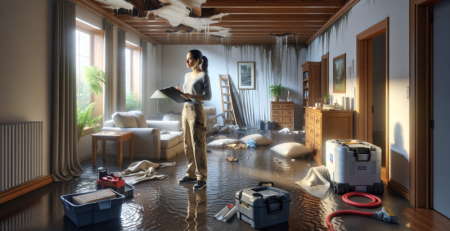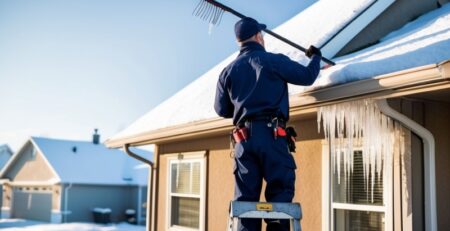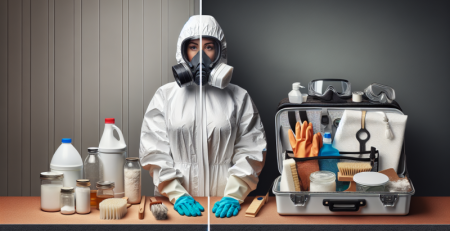The Long-Term Effects of Water Damage
Water damage can have devastating and long-lasting effects on your property, often leading to serious structural issues and health concerns. At Kraus Restoration, NJ’s leaders in water damage restoration, we understand the complexities involved in addressing water-related incidents. From stormwater runoff to sewage backups, the aftermath of water damage can create an environment ripe for mold growth, which poses additional risks to your health and home. Our mission is to help homeowners and property managers in Central and Northern New Jersey navigate the challenges of water damage, ensuring a swift and thorough restoration process. With our 24/7 emergency services, IICRC certified experts, and commitment to customer satisfaction, we are here to restore not just your property, but your peace of mind. In this blog, we will explore the long-term effects of water damage and why timely intervention is crucial for safeguarding your home and health.
Understanding the Hidden Dangers of Water Damage
Water damage is often perceived as a mere inconvenience, but its long-term effects can be far-reaching and detrimental to both property and health. Understanding the hidden dangers associated with water damage is crucial for homeowners and business owners alike. Water intrusion can stem from various sources, including natural disasters, plumbing failures, or even minor leaks that go unnoticed. Regardless of the cause, the consequences can be severe if not addressed promptly and effectively.
One of the most significant hidden dangers of water damage is the potential for mold growth. Mold thrives in damp environments, and once it takes hold, it can spread rapidly. According to the Environmental Protection Agency (EPA), mold can begin to grow within 24 to 48 hours after water exposure. This rapid growth can lead to health issues, particularly for individuals with respiratory conditions, allergies, or weakened immune systems. Symptoms of mold exposure can include nasal congestion, throat irritation, coughing, and skin rashes. In severe cases, prolonged exposure can lead to more serious health complications, making it essential to address water damage immediately.
Another hidden danger of water damage is structural deterioration. When water seeps into walls, floors, and foundations, it can weaken the structural integrity of a building. Wood, for instance, can become soft and compromised, leading to potential collapse if left untreated. The National Association of Home Builders (NAHB) reports that water damage is one of the leading causes of structural damage in homes. This deterioration not only poses safety risks but can also lead to costly repairs and decreased property value.
Additionally, water damage can create an environment conducive to pests. Insects and rodents are often attracted to damp areas, and their presence can lead to further complications, including the spread of disease. A study published in the Journal of Environmental Health found that homes with water damage are more likely to experience pest infestations, which can exacerbate health risks for occupants.
The financial implications of water damage are also significant. According to the Insurance Information Institute, water damage is one of the most common claims made by homeowners, with the average claim costing around $11,000. However, the long-term costs can be even higher when considering the potential for mold remediation, structural repairs, and pest control. Furthermore, properties that have experienced water damage may face decreased resale value, making it a costly issue in the long run.
Preventing water damage is crucial, but understanding its hidden dangers is equally important. Regular inspections of plumbing systems, roofs, and basements can help identify potential issues before they escalate. Homeowners should also be aware of the signs of water damage, such as discoloration on walls, musty odors, and increased humidity levels. If water damage is suspected, it is essential to contact professionals who specialize in water cleanup and restoration to mitigate the risks effectively.
In conclusion, the hidden dangers of water damage extend far beyond the immediate inconvenience of wet floors and damaged belongings. From health risks associated with mold growth to structural deterioration and financial burdens, the long-term effects can be profound. By understanding these dangers and taking proactive measures, property owners can protect their investments and ensure a safe living environment. For more information on how to address water damage and its consequences, consider visiting our about page or explore our services for comprehensive restoration solutions.
References:
- Environmental Protection Agency. Mold Remediation in Schools and Commercial Buildings. Retrieved from https://www.epa.gov/mold/mold-remediation-schools-and-commercial-buildings-guide
- National Association of Home Builders. Water Damage: Causes and Prevention. Retrieved from https://www.nahb.org/
- Insurance Information Institute. Homeowners Insurance: Water Damage. Retrieved from https://www.iii.org/fact-statistic/facts-statistics-homeowners-and-renters-insurance
- Journal of Environmental Health. The Impact of Water Damage on Pest Infestations. Retrieved from https://www.neha.org/
Health Risks Associated with Prolonged Exposure to Moisture
Prolonged exposure to moisture can lead to a variety of health risks that significantly impact individuals and communities. When water damage occurs, whether from flooding, leaks, or high humidity, it creates an environment conducive to the growth of mold and mildew. These fungi thrive in damp conditions and can release spores into the air, which can be inhaled by occupants. This exposure can lead to respiratory issues, including asthma, allergic reactions, and other chronic respiratory conditions. Individuals with pre-existing health problems, such as asthma or weakened immune systems, are particularly vulnerable to these effects.
Moreover, mold exposure can cause skin irritations and other allergic reactions, manifesting as rashes, sneezing, and eye irritation. The severity of these symptoms can vary based on the individual’s sensitivity and the extent of mold growth. In addition to mold, prolonged moisture can also lead to the proliferation of bacteria and other pathogens, which can pose further health risks. Contaminated water can harbor harmful microorganisms that can lead to gastrointestinal issues and infections.
Another significant concern related to prolonged moisture exposure is the potential for structural damage to buildings, which can lead to unsafe living conditions. As materials like wood and drywall absorb moisture, they can weaken and become compromised, leading to structural failures. This not only poses physical risks but can also lead to increased stress and anxiety for those living in such environments.
To mitigate these health risks, it is crucial to address water damage promptly. Professional services such as water cleanup and mold cleanup are essential in restoring a safe living environment. Regular inspections and maintenance can also help prevent moisture buildup and the associated health risks. By understanding the dangers of prolonged exposure to moisture, individuals can take proactive steps to protect their health and well-being. For more information on how to address water damage and its effects, feel free to contact us.
In conclusion, the long-term effects of water damage can be profound and far-reaching, impacting not only the structural integrity of buildings but also the health and well-being of their occupants. From mold growth and air quality issues to financial burdens and emotional stress, the consequences of neglecting water damage can linger long after the initial incident. It is crucial for homeowners and property managers to address water damage promptly and effectively, employing professional remediation services when necessary. By taking proactive measures to prevent and mitigate water damage, individuals can protect their investments, ensure a safe living environment, and ultimately safeguard their health. Awareness and action are key in combating the hidden dangers of water damage, making it essential to stay informed and vigilant.






